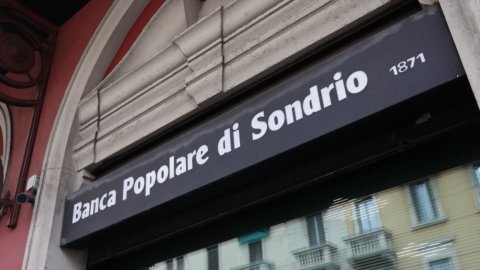Aim Italia, the party has just begun. The segment of Piazza Affari dedicated to SMEs has just closed a record 2017, with 24 new listed companies (now the total is 95), an equity raising of 1,26 billion euros (+500% compared to 2016), a capitalization doubled to 5,7 billion and an index, the Ftse Aim, which was the best in Europe with an increase of 23 % (the main basket, Ftse Mib, did +16%).
The merit of this boom is twofold: "PIRs and the tax credit for IPOs, which came into force in 2018: a combination that I define as perfect", he explains to FIRSTonline Anna Lambiase, managing director of Ir Top, equity markets partner of Borsa Italiana specialized in advisory for companies, in particular small and mid caps, listed or wishing to be listed on the Stock Exchange. “And this is just the beginning: according to our forecasts, in 2020 we will reach the 300 companies listed on the Aim. About fifty will be listed this year, the others in the two-year period 2019-20, when the amount allocated for the tax credit will rise to 30 million a year from 20 in 2018".
The tax credit launched with the latest Budget Law can be accessed by SMEs, i.e. companies with a maximum turnover of 50 million and a maximum of 250 employees, who will thus benefit from a 50% discount on the fixed costs of listing, up to a maximum of 500.000 euros each. “With this incentive – explains Lambiase – it will cost companies much less to go public than to borrow from a bank: 60% less, according to our estimates. Not to mention that the companies themselves, especially the small ones that find it more difficult to obtain credit, thus have a possibility of increasing capital that they would not have through the banking channel".
The tax credit will therefore be worth 80 million over the next three years, but before that the PIR wind was blowing very strongly on the Italian productive fabric. The Individual Savings Plans, launched by the outgoing government in the penultimate Budget Law and dedicated to small investors (natural persons only) encouraging them to channel their savings to SMEs, have gone far beyond expectations and have already injected new liquidity for local businesses for almost 11 billion in 2017 (at the beginning of the year funding of less than 2 billion was expected), and it is now believed that they could reach 70 billion in five years.
The PIRs are therefore a medium-long term investment (must last at least 5 years), in defense of Made in Italy (70% of the amount invested must be allocated to financial instruments issued by Italian companies or by foreign companies with permanent establishments in Italy) and convenient for the saver, which will not pay taxes on capital gains, dividends, inheritance and gifts.
The monstrous amount raised will make it easier for many companies to achieve a solidity that allows them to enter the stock market and contact investors: "It is precisely what we deal with as Ir Top - says Lambiase -: our Observatory monitors all listed companies and x-rays those that are in the listing phase. It represents an information tool open to all to evaluate these companies beyond the balance sheet data. We have recently launched Pmi Capital, our digital platform dedicated to investors institutional and professional”.
All of this implies, with already visible results, a repercussion on the real economy. Indeed, if the companies listed on the AIM are mainly from the financial sector, technological, green economy and above all industrial ones are growing more and more, testifying to a recovery of the production system. “There is undoubtedly a favorable climate – confirms Lambiase – and the merit lies with the reforms of the last government, which must be acknowledged, for example, with measures such as Industry 4.0. In the coming years we expect a prevalence of IPOs from the manufacturing sector”.
“But it is above all the 'Finance for growth' package – concludes Lambiase -, with the combination of PIR-tax credit for IPO, which is the winner: it is perfectly centered and in the past such an operation had never been done. Is there a bubble risk for some companies? Yes, we have seen it in recent months, it is useless to deny that there are overvalued companies. This is precisely what the Pmi Capital platform is for, which takes an in-depth screen of all the companies”.





